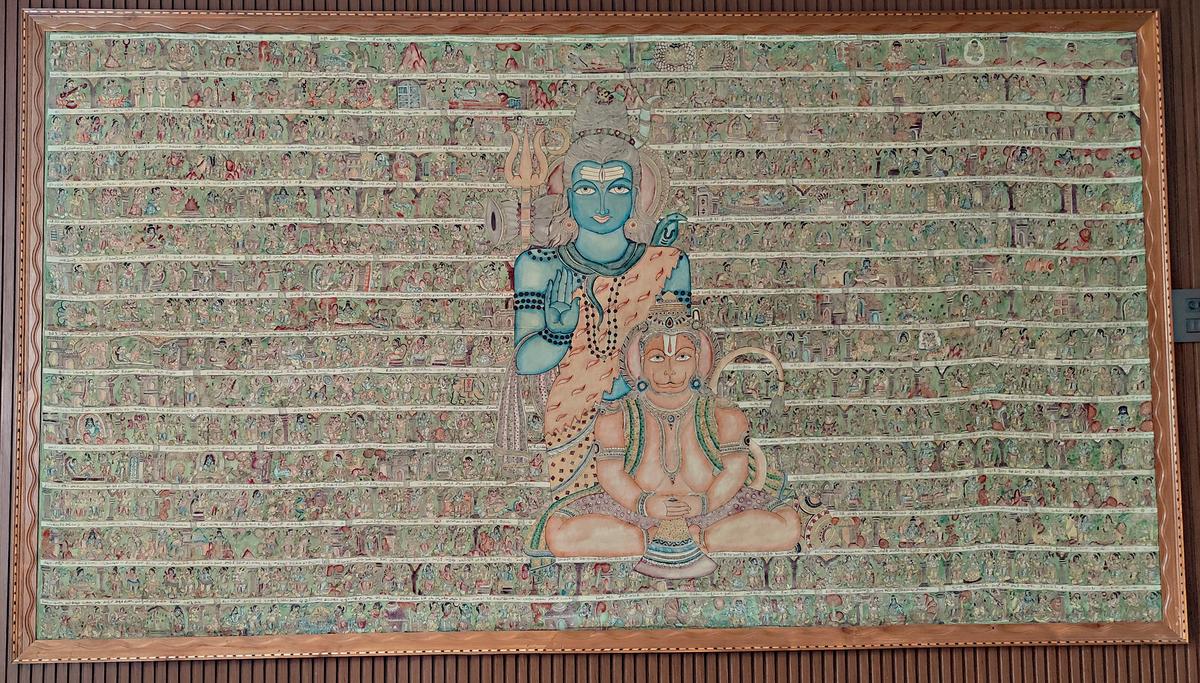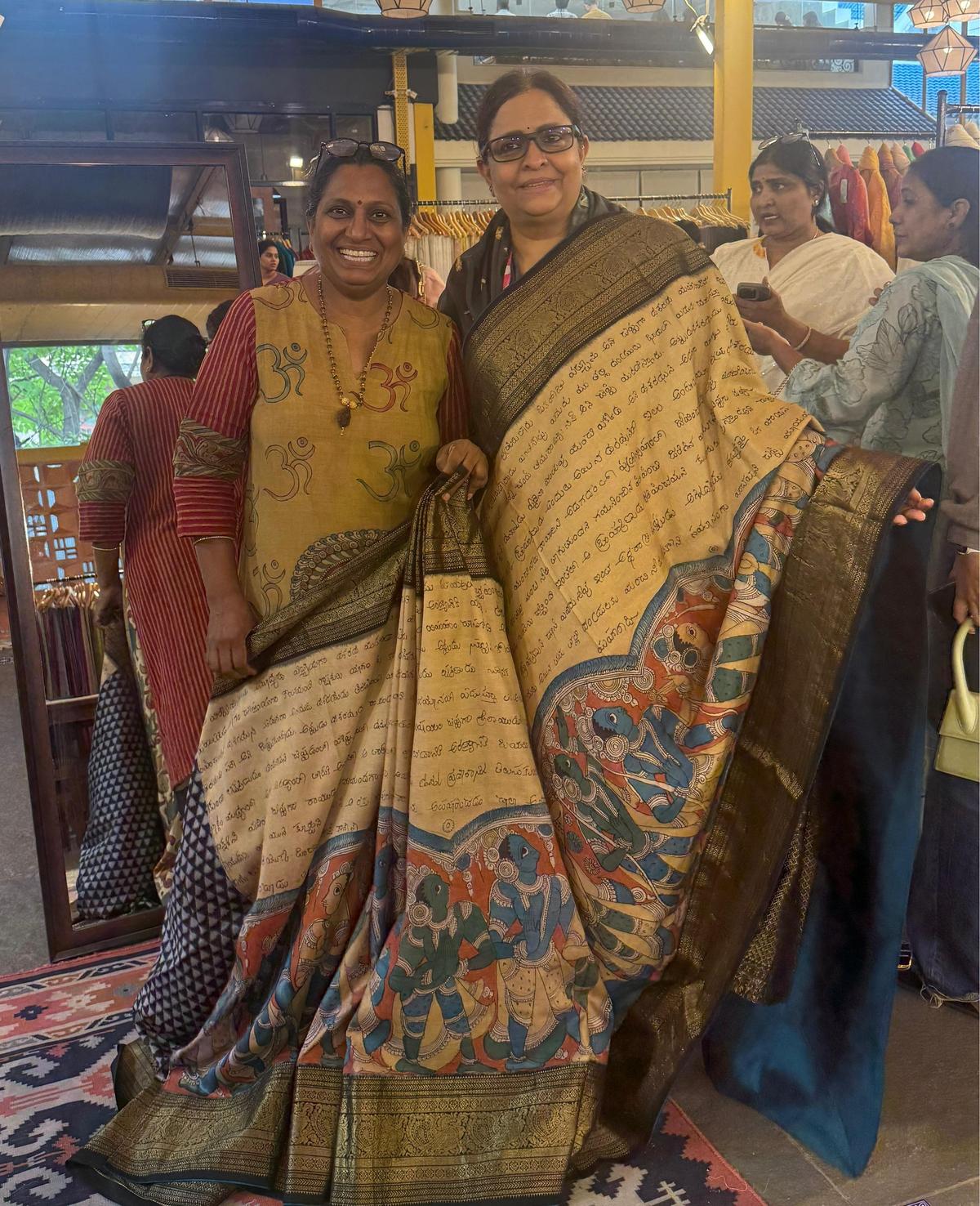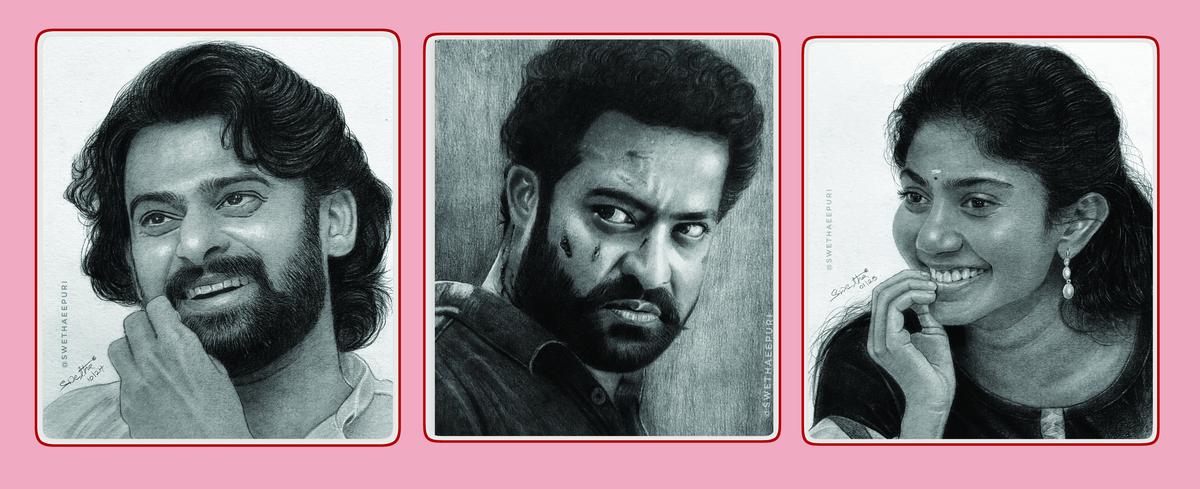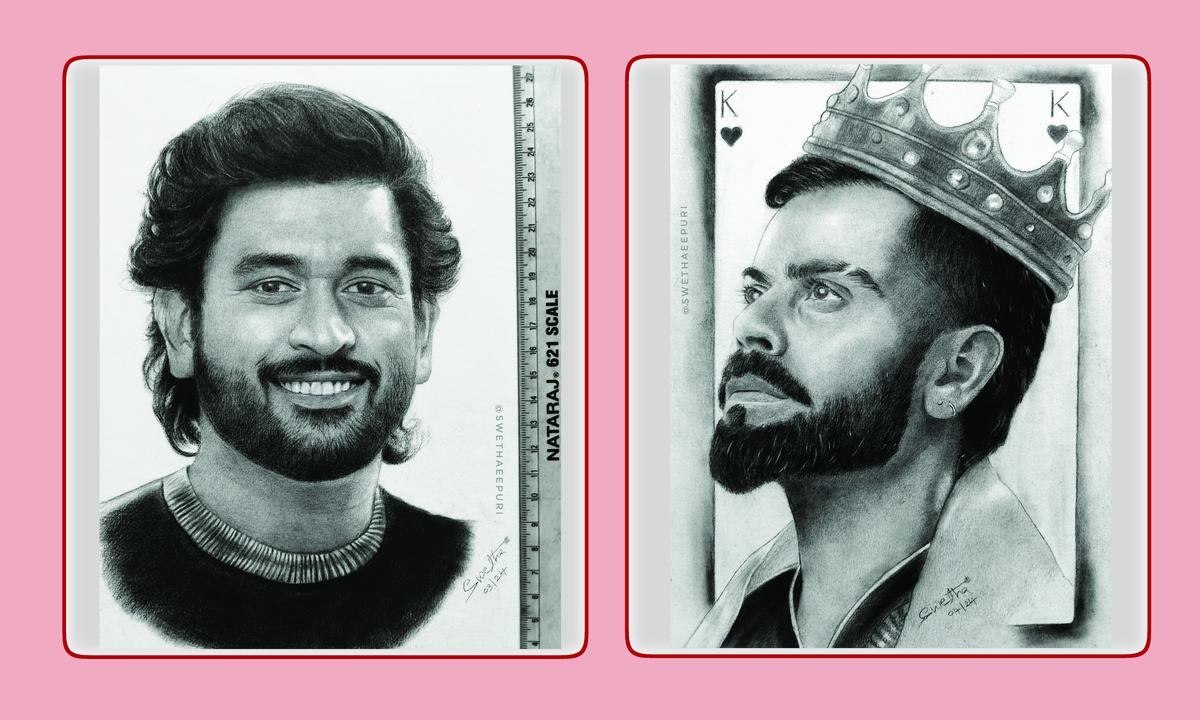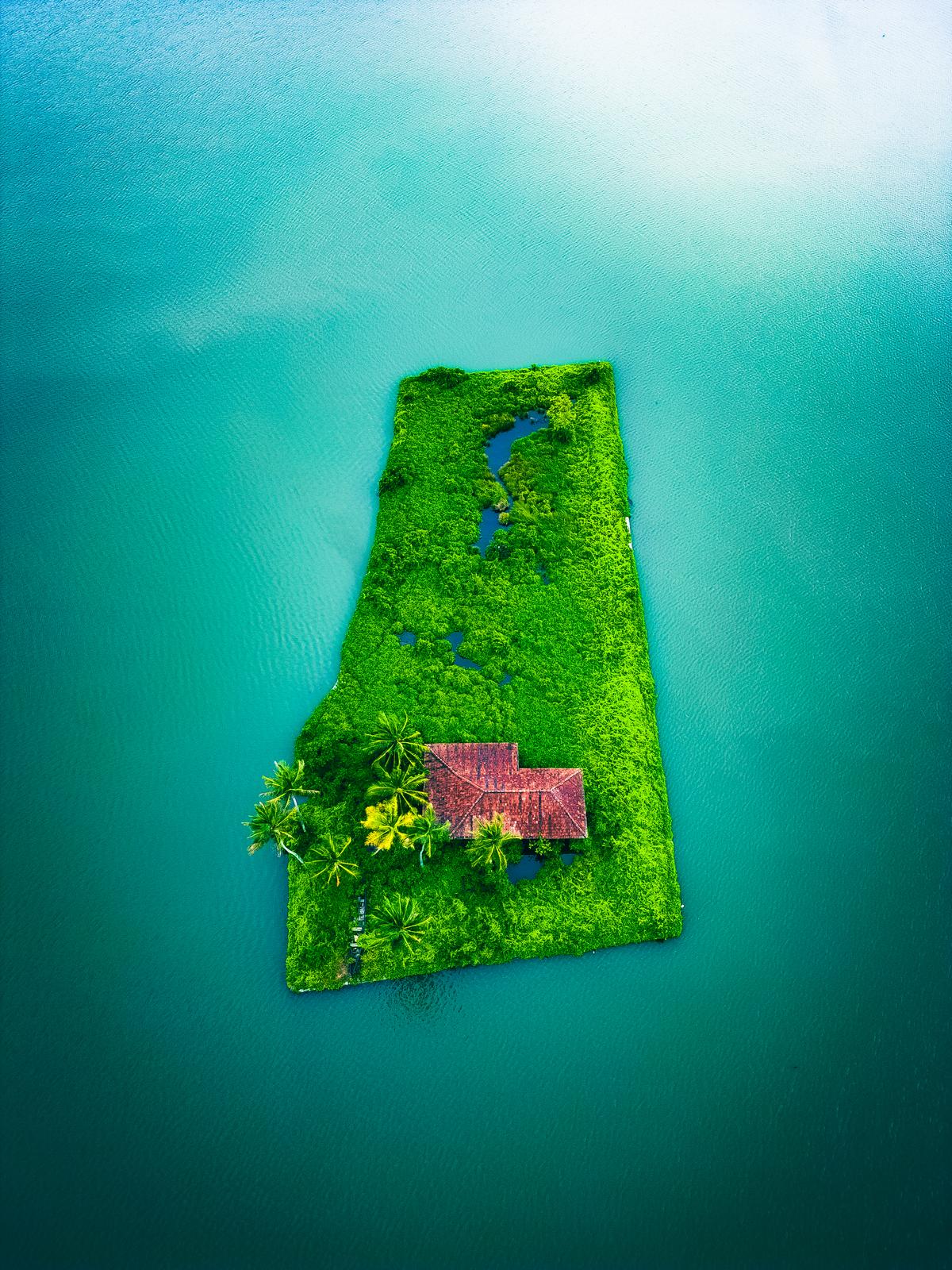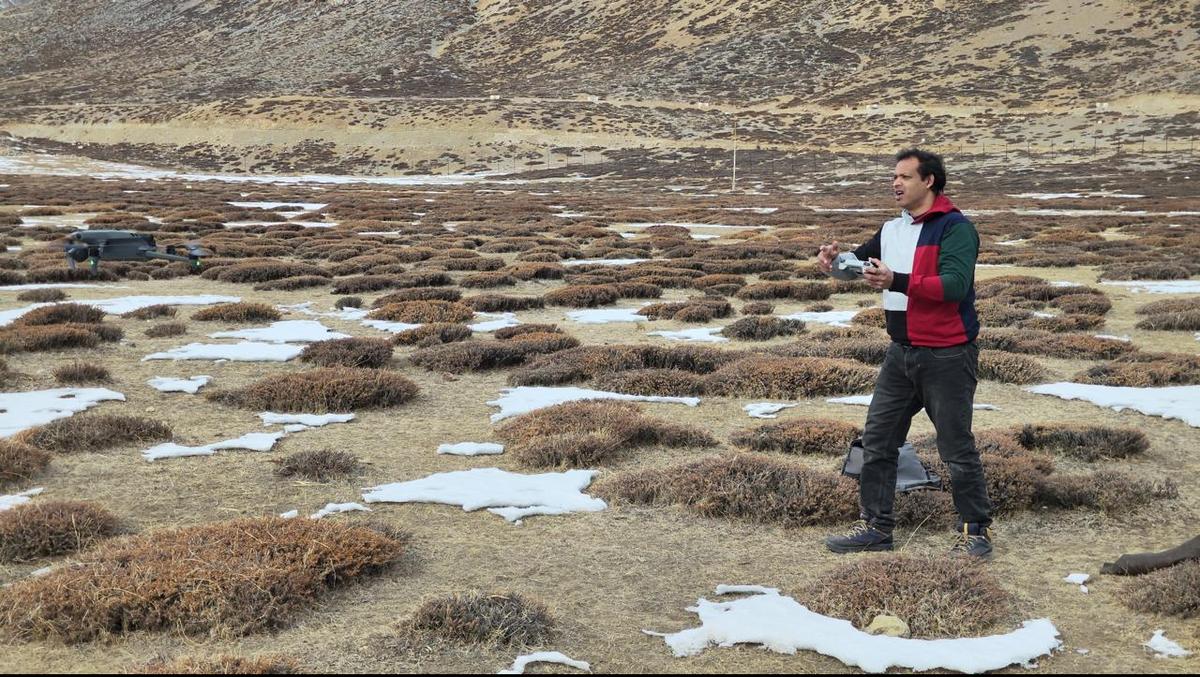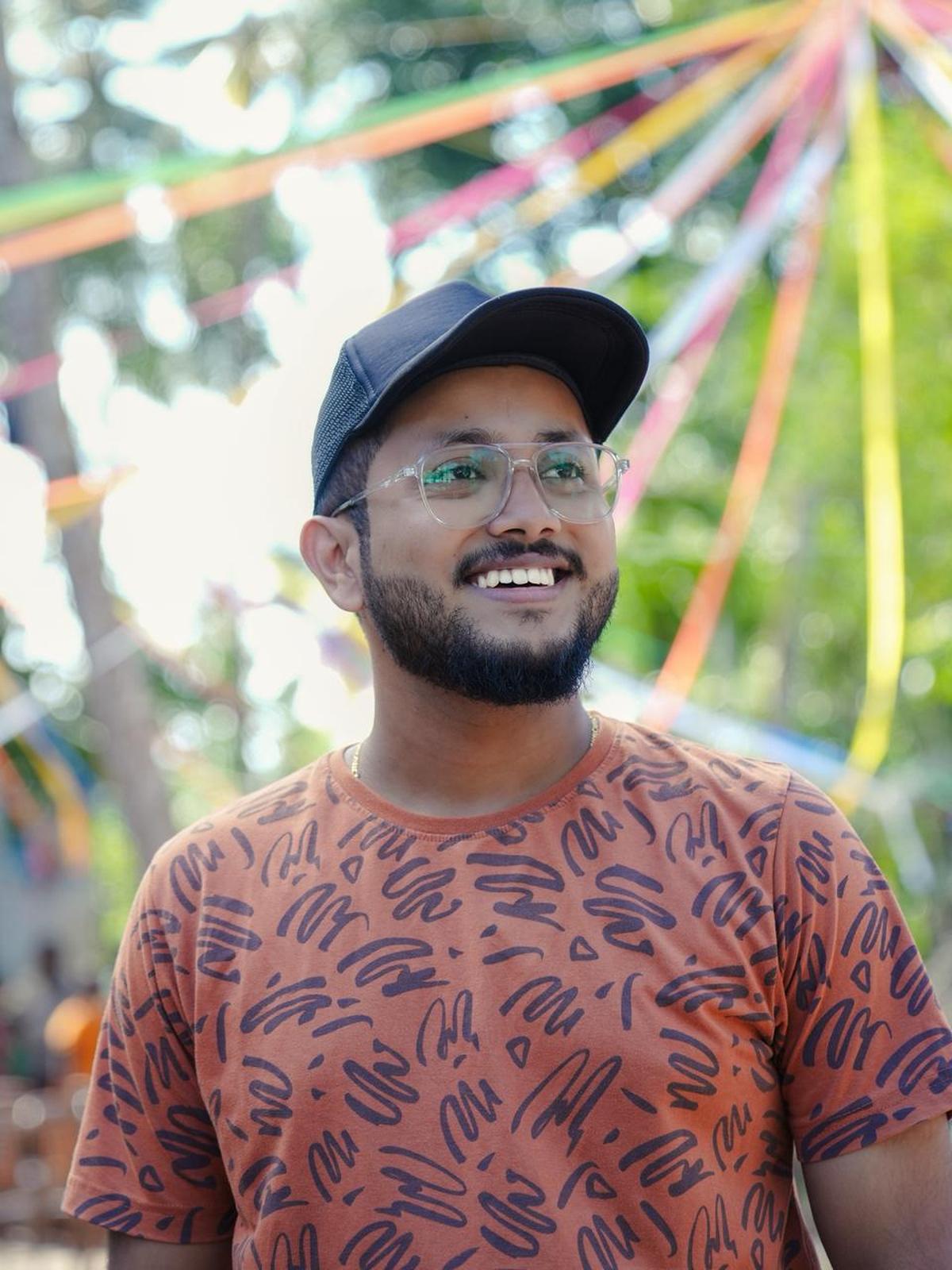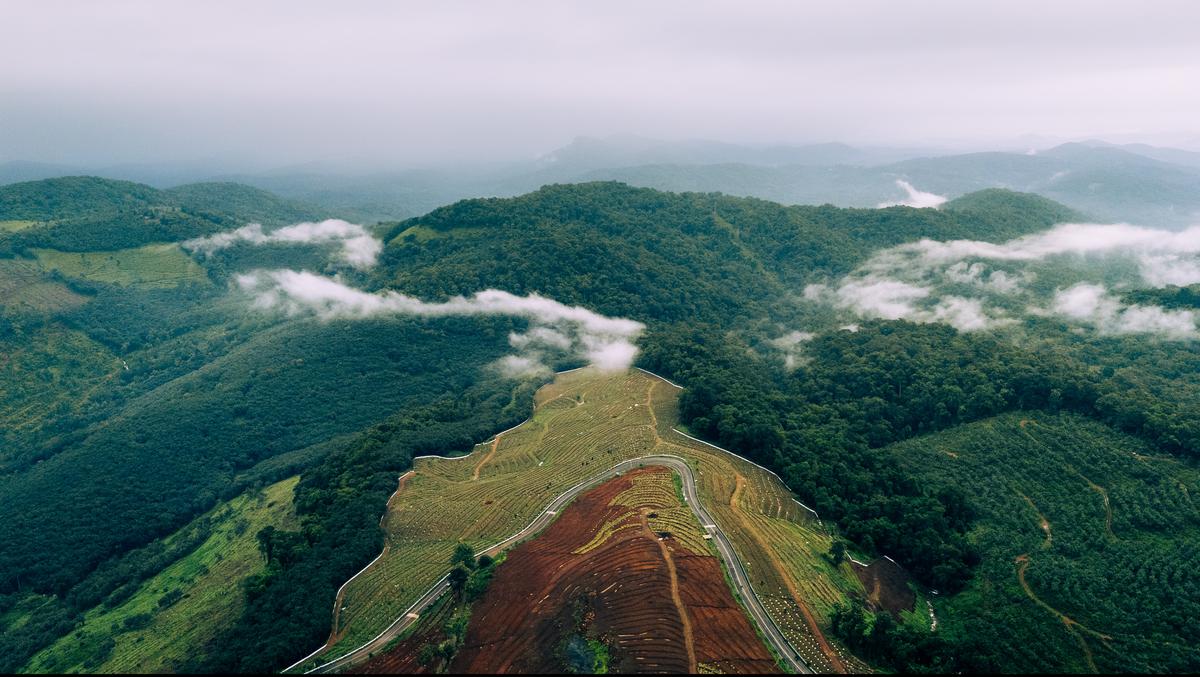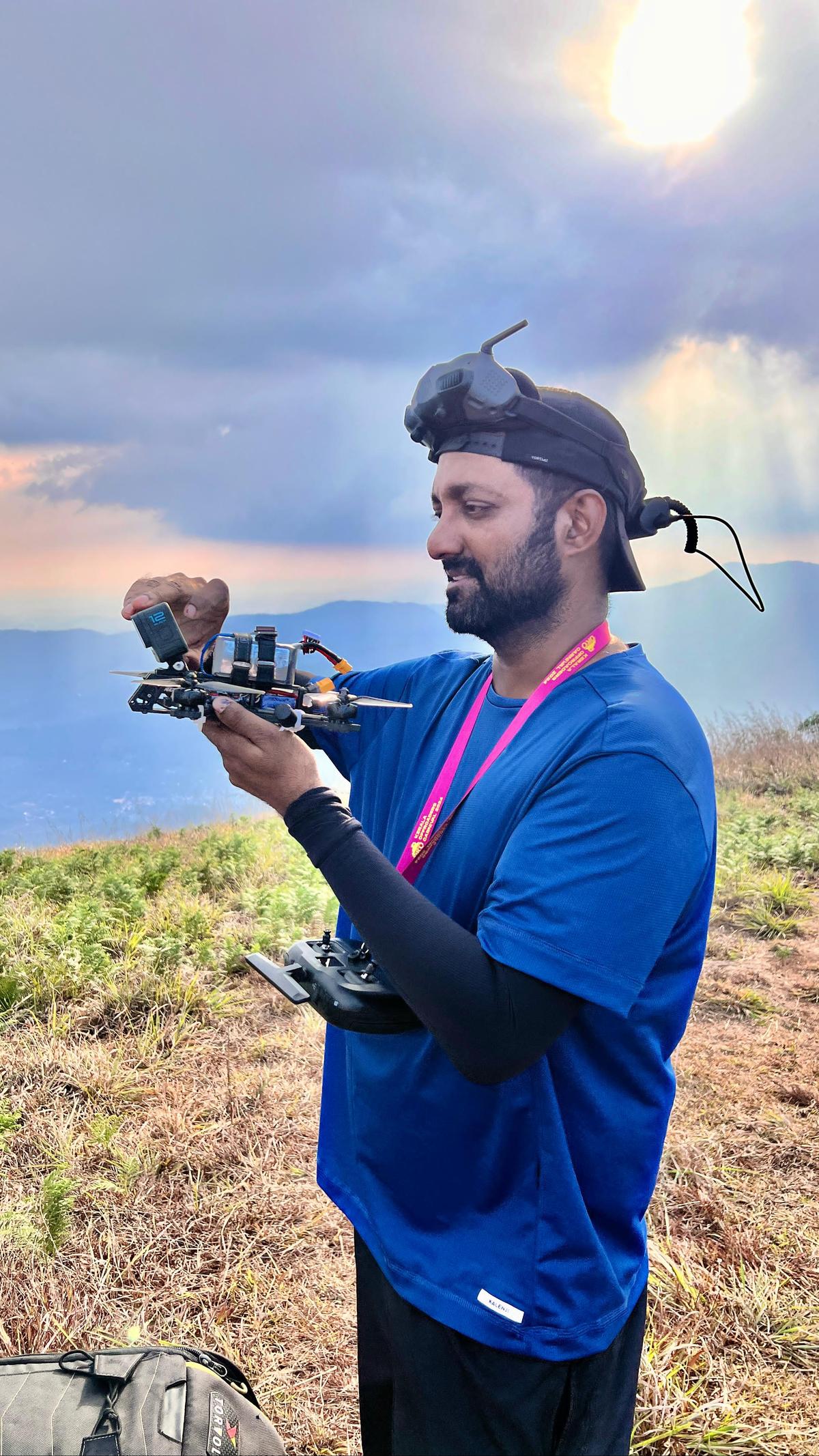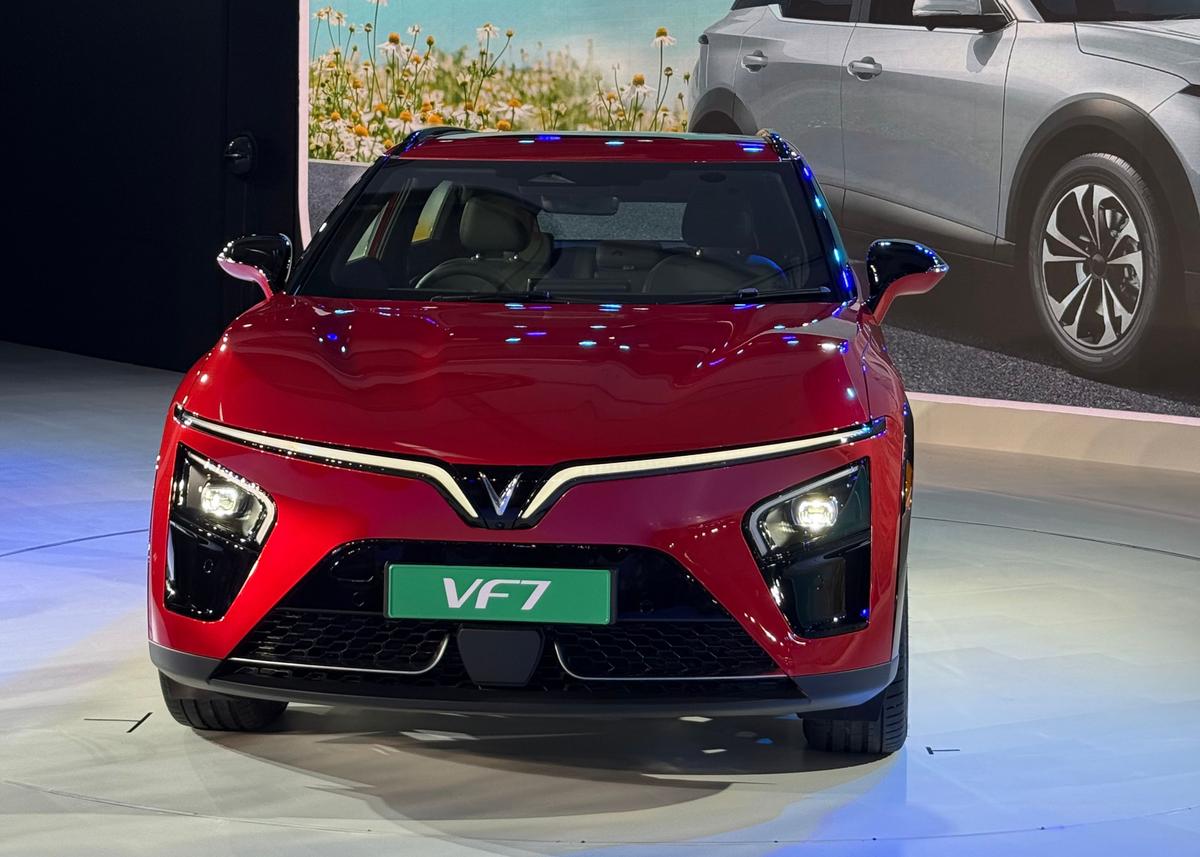When we catch up with Mujeeb Padikka, he is high up in the Idukki hills scouting for his next reel. “That is pretty much my weekend routine. I pick a spot, stop at a local tea shop and get the tea seller to dish out little nuggets of local wisdom. You might get a tip on a hidden viewpoint or even the next bus schedule,” he says. Mujeeb, a techie from Kochi, is a top content creator who shares reels on his Instagram handle, @tripwithmp.
A drone shot of Kumbalangi
| Photo Credit:
Mujeeb Padikka
We have long revelled in Kerala’s stunning landscapes from the ground and Mujeeb belongs to the growing community of drone enthusiasts who are lifting our gaze skyward, offering an awe-inspiring perspective of the state’s picturesque terrain. From the lush nostalgia of Kollengode to the rhythmic dance of the snake boats on the backwaters of Alappuzha, the mist embracing Munnar’s tea plantations, and everywhere in between, these content creators are re-imagining the familiar sights in ways we have never seen before. Their photos and reels draw millions of views on social media, such as the viral reel of a cricket ground amid the dense greenery in Varandarapally, Thrissur, by Sreejith S (@notonthemap). Each of these frames is a love letter to Kerala, reaffirming the state’s reputation as a tourism haven.
Mujeeb Padikka
| Photo Credit:
SPECIAL ARRANGEMENT
“Kerala is a drone pilot’s dream because of the diversity of the landscape. We have beaches, backwaters, lagoons, islands, mountains… And the best part? It is beautiful in every season,”says Mujeeb.
Capturing the perfect shot often takes more than one visit. “It is rare to get the shot in one go. Lots of things have to line up — the wind, the weather, the sunlight, the drone, the bus…” explains Mujeeb, adding, “I do not recall the reel that first hit one million views but I do remember my first reel that hit 25 million views — of a lone bus winding through Kadamakudy. It took me three visits and multiple tries!”
Arun P Jose
| Photo Credit:
SPECIAL ARRANGEMENT
Just across the Kerala-Tamil Nadu border, Arun P Jose, better known as dronolphy to his nearly 900K followers, is on the road, driving through the windmills of Nagercoil, in search of his next reel. “It is not just the beauty but also the unhurried rhythm of life, the softness, the stillness, that add extra magic to reels. That kind of quiet charm is rare to come by,” says Arun, who is a bit of a legend within the drone pilot community.
A cardamom planter from Kattappana, Idukki, Arun was among the first to embrace the trend back in 2018. His reels introduced us to the now-iconic misty ridges of Kolukkumalai and the rani pink water lilies of Malarikkal, Kottayam.
Arun is also widely credited as the first drone pilot in Kerala to layer nostalgic music onto footage, adding a cinematic touch that has since become a genre-definer. “Discovering drone photography saved me from crashing and burning as an alcoholic,” says Arun, candidly. “It has become my new high! I have not touched a drop since I first started experimenting with a toy drone that I bought online.”Arun has since graduated to collaborations with leading global brands like DJI and continues to inspire thousands.
Catching up with the trend
While drone photography has technically been around since the early 2010s, when affordable, user-friendly models first hit the market, it is only in the last few years that the trend has taken flight in Kerala. Most serious hobbyists rely on high-end, imported drones, which require official registration and are not readily available in India. The lack of clear guidelines for drone operations adds to the uncertainty. Despite this the interest has surged.
Abu Joy Jacob
| Photo Credit:
SPECIAL ARRANGEMENT
“Last year, when I was at the Champakulam Moolam Boat Race, there were three hobbyist drone pilots. This year, there were 14, including me,” says young Abu Joy Jacob, a communications specialist, and a rising name in the drone community.
A drone shot of Himalayan Para in Pathanamthitta
| Photo Credit:
Abu Joy Jacob
Abu uses his Instagram handle, @_letsflyy_, to showcase the often-overlooked beauty of Pathanamthitta, his home district.
“I live in upper Kuttanad, in the western end of the district, and my mother’s family is from Seethathode, in the east. As a child, I often travelled to and fro, passing Aranmula, Ranni, Chittar and Maniyar; destinations that always sparked my imagination. Now, with my drone, Iget to see the same places from the sky, from angles I could never reach on foot.”
A drone shot of Laha enroute Sabarimala
| Photo Credit:
Abu Joy Jacob
The rise of short-form videos like Instagram Reels and YouTube Shorts created this huge demand for visually stunning, bite-sized content. Simultaneously, advancements in drone technology have made it easier for creators to capture cinematic-style footage with relatively little technical training. Paired with accessible editing tools, these skybound storytellers can now produce professional-looking content from their phones or laptops.
Most of these serious hobbyists use ‘normal’ drones, with built-in stabilisation and maneuverability, which require little-to-no training to operate (content creation is another skill altogether!).
Nithin Prabhakar
| Photo Credit:
SPECIAL ARRANGEMENT
Then there’s Nithin Prabhakar (@kidufpv), a professional photographer-turned-“drone cinematographer” from Chengannur, who is among the few FPV (First-Person View) drone pilots. It is a high-speed approach that places viewers right in the middle of the action. Think zooming along the Vembanad on a snake boat from the perspective of one of the rowers.
Or, spiralling inside the maranakkinar (Well of death), along with the motorcyclist, in Hanumankind’s international hit, Big Dawgs, which, incidentally, Nithin himself filmed! “That’s the kind of visceral storytelling that FPV makes possible,” says Nithin, who has worked in numerous films from Vijay Devarakonda’s Liger to the latest Sumathi Valavu.
“FPVs are custom-built for speed and batteries last just three minutes. You have to be fast, focused and fully present. There is no autopilot. It is just you and the drone,” explains Nithin.
Whether it is FPV or normal drones, one thing remains constant, according to all these pilots. “Flying a drone is like building a relationship. You learn its quirks, limits and how far you can push it. And in return it gives you access to perspectives you could never reach on your own,” says Mujeeb.






